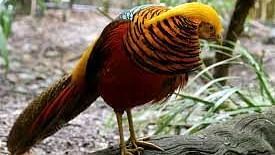
Golden pheasant or Chinese pheasant:
Scientific Name: Chrysolophus pictus
The Chinese pheasant or the golden pheasant is amongst the most popular species of pheasant endemic to the mountain forests of western and central China. The golden pheasant was brought to the United Kingdom almost a century ago and there are about 100 mating pairs during the summer. At EsselWorld Bird Park, these birds are kept at the optimum climatic conditions to help them thrive.
The Chinese pheasant or the golden pheasant is amongst the most popular species of pheasant endemic to the mountain forests of western and central China. The golden pheasant was brought to the United Kingdom almost a century ago and there are about 100 mating pairs during the summer. At EsselWorld Bird Park, these birds are kept at the optimum climatic conditions to help them thrive.

Melanistic Ring-necked Pheasant:
Scientific Name: Phasianus colchicus
The discovery of the melanistic ring-necked pheasant in England can be dated back to a 100 years ago. These birds are the mutated versions of the ring-necked pheasants. Even though they are spread across the country, a majority of them flock to the forest ecosystems, meadows, and temperate woodlands. Living in the wild, these birds have developed immense intellectual capabilities and are cautious. They have hence made it to the priority list of species preferred for naturalization. The male birds grow up to 24 to 35 inches. They live 9 years on average, up to 15 and even more.
The discovery of the melanistic ring-necked pheasant in England can be dated back to a 100 years ago. These birds are the mutated versions of the ring-necked pheasants. Even though they are spread across the country, a majority of them flock to the forest ecosystems, meadows, and temperate woodlands. Living in the wild, these birds have developed immense intellectual capabilities and are cautious. They have hence made it to the priority list of species preferred for naturalization. The male birds grow up to 24 to 35 inches. They live 9 years on average, up to 15 and even more.
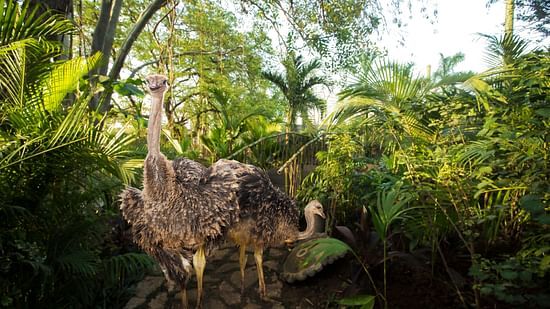
Ostrich:
Scientific Name: Struthio camelus
The ostrich holds the title of the largest bird in the world. Another unique fact about this massive bird is that it urinates and defecates separately in contrast to other birds. These flightless birds are extremely fast on their feet and can reach an average speed of 70km/hr while sprinting, covering up to an astounding 5m per stride. Wild ostriches are native to the dry, hot savannas and woodlands of Africa. As per the University of Michigan Museum of Zoology, due to extensive hunting the range of the ostrich’s habitat has been reduced from all over Asia, Africa and the Arabian Peninsula to just sub-Saharan Africa.
The ostrich holds the title of the largest bird in the world. Another unique fact about this massive bird is that it urinates and defecates separately in contrast to other birds. These flightless birds are extremely fast on their feet and can reach an average speed of 70km/hr while sprinting, covering up to an astounding 5m per stride. Wild ostriches are native to the dry, hot savannas and woodlands of Africa. As per the University of Michigan Museum of Zoology, due to extensive hunting the range of the ostrich’s habitat has been reduced from all over Asia, Africa and the Arabian Peninsula to just sub-Saharan Africa.
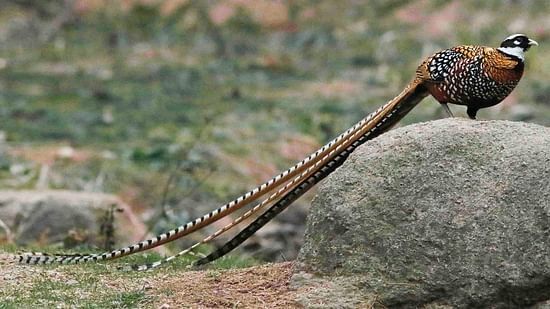
Reeves’s Pheasant:
Scientific Name: Syrmaticus reevesii
A native of China, Reeves's pheasant is a particularly large pheasant species within the Syrmaticus genus. The species was first introduced to Europe in 1831 by the British naturalist John Reeves after whom the species was named. These birds live in the evergreen forests of central and eastern China. The tails of the males can grow 30 cm each year. The species has been marked vulnerable on the IUCN Red List of Threatened Species. Only 2000 of these magnificent birds have been assumed to be remaining in the wild.
A native of China, Reeves's pheasant is a particularly large pheasant species within the Syrmaticus genus. The species was first introduced to Europe in 1831 by the British naturalist John Reeves after whom the species was named. These birds live in the evergreen forests of central and eastern China. The tails of the males can grow 30 cm each year. The species has been marked vulnerable on the IUCN Red List of Threatened Species. Only 2000 of these magnificent birds have been assumed to be remaining in the wild.

Ring-necked Pheasant:
Scientific Name: Phasianus colchicus
The ring-necked pheasant or the common pheasant can be seen striding across open fields and weedy patches by the roads in the United States and Canada. The males have a striking plumage coloured copper and gold with a red face and a white-collar, while the females are predominantly brown. These birds were brought to the States from Asia and soon became very popular as game birds. Unfortunately, in the United States, this species is considered invasive. They are bred in captivity to be released for hunting purposes.
The ring-necked pheasant or the common pheasant can be seen striding across open fields and weedy patches by the roads in the United States and Canada. The males have a striking plumage coloured copper and gold with a red face and a white-collar, while the females are predominantly brown. These birds were brought to the States from Asia and soon became very popular as game birds. Unfortunately, in the United States, this species is considered invasive. They are bred in captivity to be released for hunting purposes.
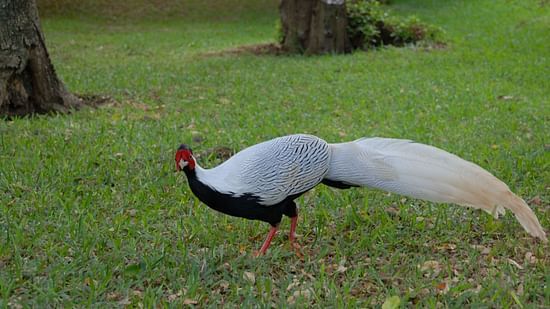
Silver Pheasant:
Scientific Name: Lophura nycthemera
The silver pheasant is a forest-dwelling species, inhabiting the forest covers in the mountains of southeast Asia and eastern and southern China. Their populations have been introduced in Hawaii and several locations in the United States. While the males sport a black and white plumage, the females are brown in colour. Due to its high population, the silver pheasant has been marked as least concern on the IUCN Red List of Threatened Species.
The silver pheasant is a forest-dwelling species, inhabiting the forest covers in the mountains of southeast Asia and eastern and southern China. Their populations have been introduced in Hawaii and several locations in the United States. While the males sport a black and white plumage, the females are brown in colour. Due to its high population, the silver pheasant has been marked as least concern on the IUCN Red List of Threatened Species.

Yellow Golden Pheasants:
Scientific Name: Chrysolophus pictus
The yellow golden pheasant or chinese pheasant is a game bird that sports a pale brown tail with darker spots of brown on its wings. The female is pale golden with dark brown barring. They belong to an array of gallinaceous birds and the Phasianidae family and are natives of the central, mountainous regions of China. The males can grow up to 90-105cm in length, with its tail making up for the majority. Their pitch-black pupils stand out from their golden-yellow faces. Golden Pheasants feast on berries, grubs, seeds and other types of vegetation.
The yellow golden pheasant or chinese pheasant is a game bird that sports a pale brown tail with darker spots of brown on its wings. The female is pale golden with dark brown barring. They belong to an array of gallinaceous birds and the Phasianidae family and are natives of the central, mountainous regions of China. The males can grow up to 90-105cm in length, with its tail making up for the majority. Their pitch-black pupils stand out from their golden-yellow faces. Golden Pheasants feast on berries, grubs, seeds and other types of vegetation.
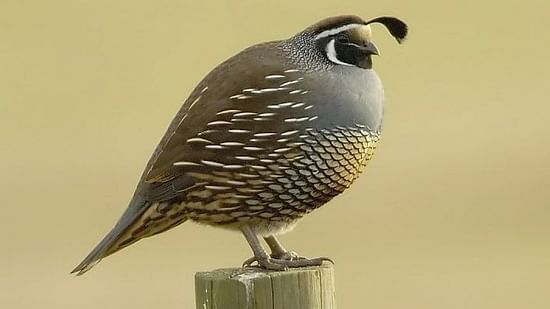
California Quail:
Scientific Name: Callipepla californica
The California quail is a plump bird with a short tail and grey-brown plumage. Both the sexes of this species have a teardrop-shaped head plume. They inhabit the open woodlands and the brushy foothills close to permanent sources of water and have no particular seasons for nesting. The population of the species has been expanded by introducing it to areas such as Utah, Hawaii, Argentina, Chile, and New Zealand. As a part of their adaptation, quails can often go without water for days and hydrate themselves from the moisture of insects or succulents they consume.
The California quail is a plump bird with a short tail and grey-brown plumage. Both the sexes of this species have a teardrop-shaped head plume. They inhabit the open woodlands and the brushy foothills close to permanent sources of water and have no particular seasons for nesting. The population of the species has been expanded by introducing it to areas such as Utah, Hawaii, Argentina, Chile, and New Zealand. As a part of their adaptation, quails can often go without water for days and hydrate themselves from the moisture of insects or succulents they consume.

Lady Arhrms Pheasant:
Scientific name: Chrysolophus amherstiae
The Lady Arhrms Pheasant is a native of China and Northern Myanmar. It was brought to England as well. While the males grow to a length of 100-120 cm, their tails accounting for more than half the length, the females are not that large. Besides, the males sport a yellow plumage with a plump tail which is a mix of red, blue and dark green with spots of white. The females are comparatively less vibrant. These birds live on leaves, grains and invertebrates. This bird attracts a large crowd to our Bird Park making it a famous tourist destination in Mumbai.
The Lady Arhrms Pheasant is a native of China and Northern Myanmar. It was brought to England as well. While the males grow to a length of 100-120 cm, their tails accounting for more than half the length, the females are not that large. Besides, the males sport a yellow plumage with a plump tail which is a mix of red, blue and dark green with spots of white. The females are comparatively less vibrant. These birds live on leaves, grains and invertebrates. This bird attracts a large crowd to our Bird Park making it a famous tourist destination in Mumbai.

Guinea Fowl:
Scientific Name: Numididae
A member of the Numididae family, the Guinea Fowl or the “pet speckled hen” are endemic to Africa and are the oldest recorded gallinaceous birds. Their diet comprises seeds, insects and ground-nesting birds. These birds are often compared to partridges in terms of mannerisms and appearance. They are scattered in the sub-Saharan regions and live in semi-open habitats of the Savannah, semi-deserts, forests and treetops.
A member of the Numididae family, the Guinea Fowl or the “pet speckled hen” are endemic to Africa and are the oldest recorded gallinaceous birds. Their diet comprises seeds, insects and ground-nesting birds. These birds are often compared to partridges in terms of mannerisms and appearance. They are scattered in the sub-Saharan regions and live in semi-open habitats of the Savannah, semi-deserts, forests and treetops.
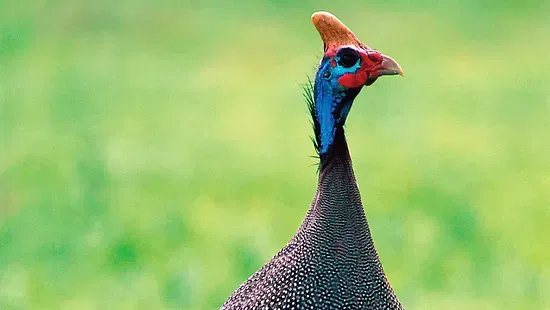
Guinea Fowl:
Scientific Name: Numididae
A member of the Numididae family, the Guinea Fowl or the “pet speckled hen” are endemic to Africa and are the oldest recorded gallinaceous birds. Their diet comprises seeds, insects and ground-nesting birds. These birds are often compared to partridges in terms of mannerisms and appearance. They are scattered in the sub-Saharan regions and live in semi-open habitats of the Savannah, semi-deserts, forests and treetops.
A member of the Numididae family, the Guinea Fowl or the “pet speckled hen” are endemic to Africa and are the oldest recorded gallinaceous birds. Their diet comprises seeds, insects and ground-nesting birds. These birds are often compared to partridges in terms of mannerisms and appearance. They are scattered in the sub-Saharan regions and live in semi-open habitats of the Savannah, semi-deserts, forests and treetops.

Not all birds can fly! You can observe our terrestrial bird heroes at one of the tourist spots near Mumbai.
Visit our other attraction:
 |